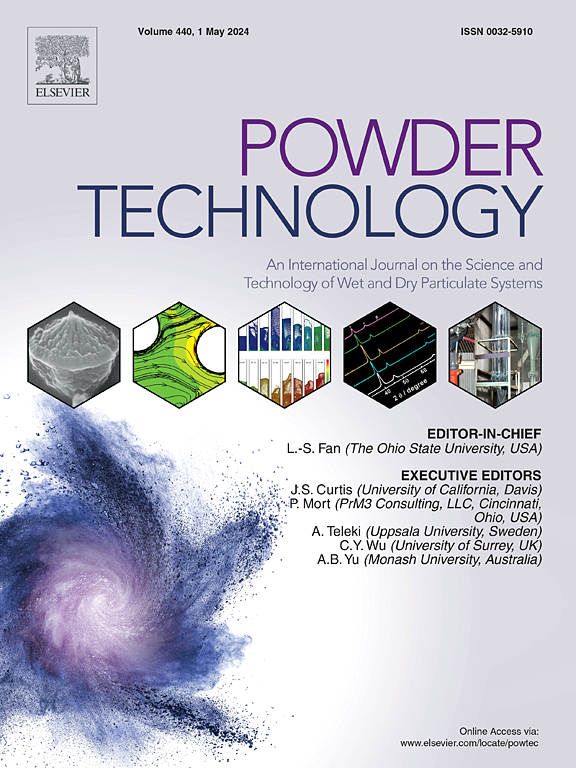Effect of grinding methods on slime dissociation characteristics and flotation kinetics of coking coal
IF 4.5
2区 工程技术
Q2 ENGINEERING, CHEMICAL
引用次数: 0
Abstract
Despite extensive research on the connection between coal flotation kinetics and particle size, little is known about the shape effect. To fill this gap, this study aims not only to explore dissociation characteristics and particle shape properties resulting from the grinding of coking coal in a planetary ball mill (PBM) and a vertical shaft impact crusher (VSIC) but also to investigate their effects on flotation kinetics. Moreover, for the first time in the literature, shape, kinetic rate constant, and bubble loading capacity (hydrophobicity) properties of coking coal products ground in two different mills were compared by shape characterization, flotation kinetics, and single bubble loading tests, respectively. The findings are: (1) Compared to PBM, VSIC produced rounder-shaped particles with a better communition selectivity, (2) Since PBM's flotation rate constant values (Km) were higher than VSIC's, the particles produced by the PBM exhibit a favorable aspect ratio for faster flotation.

求助全文
约1分钟内获得全文
求助全文
来源期刊

Powder Technology
工程技术-工程:化工
CiteScore
9.90
自引率
15.40%
发文量
1047
审稿时长
46 days
期刊介绍:
Powder Technology is an International Journal on the Science and Technology of Wet and Dry Particulate Systems. Powder Technology publishes papers on all aspects of the formation of particles and their characterisation and on the study of systems containing particulate solids. No limitation is imposed on the size of the particles, which may range from nanometre scale, as in pigments or aerosols, to that of mined or quarried materials. The following list of topics is not intended to be comprehensive, but rather to indicate typical subjects which fall within the scope of the journal's interests:
Formation and synthesis of particles by precipitation and other methods.
Modification of particles by agglomeration, coating, comminution and attrition.
Characterisation of the size, shape, surface area, pore structure and strength of particles and agglomerates (including the origins and effects of inter particle forces).
Packing, failure, flow and permeability of assemblies of particles.
Particle-particle interactions and suspension rheology.
Handling and processing operations such as slurry flow, fluidization, pneumatic conveying.
Interactions between particles and their environment, including delivery of particulate products to the body.
Applications of particle technology in production of pharmaceuticals, chemicals, foods, pigments, structural, and functional materials and in environmental and energy related matters.
For materials-oriented contributions we are looking for articles revealing the effect of particle/powder characteristics (size, morphology and composition, in that order) on material performance or functionality and, ideally, comparison to any industrial standard.
 求助内容:
求助内容: 应助结果提醒方式:
应助结果提醒方式:


